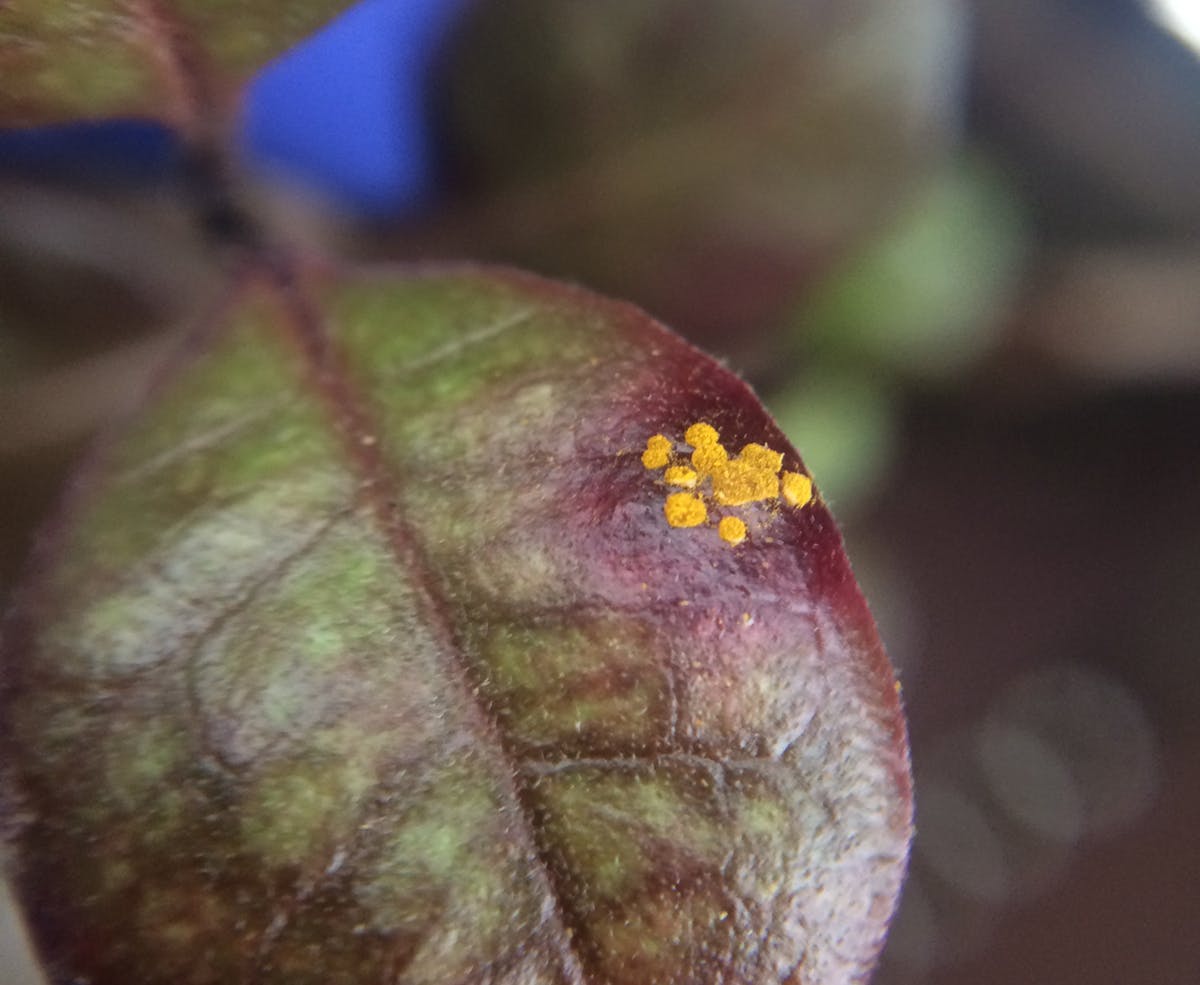Killer fungus myrtle rust has been found in the Kaimai Ranges for the first time, while tracks closed to prevent the spread of the disease near Raglan are expected to reopen soon.
Myrtle rust kills myrtle species, including pohutukawa and is spread via the wind. It was first discovered in New Zealand in autumn last year and has since spread to over 700 sites around the North Island and the top of the South Island. Scientists have warned it could have devastating consequences for native forests.
Earlier this year, tracks were closed at Mt Messenger in Taranaki and Mt Karioi near Raglan after rust was discovered.
DOC myrtle rust programme manager Phil Hancock said so far only one infected tree has been found in native forest in the Kaimai Range, north of Te Aroha.
Hancock said the tree was discovered by chance by a researcher two weeks ago, about 50m off a track – he did not want to name the track to prevent people visiting the area out of curiosity.
At this stage, DOC doesn’t plan to close any tracks in the area. It has searched the surrounding bush and found no other infected plants. As the disease becomes dormant over winter, it is unlikely to spread further until spring and DOC will either monitor or remove the plant.
Myrtle rust has also been found in the 700ha Awaroa Scenic Reserve, east of Kawhia Harbour, after a member of the public reported it. Hancock said about 100 plants were infected. There are no tracks in the reserve and DOC doesn’t plan to close it.
Meanwhile, DOC is considering options to reopen the Mt Karioi Summit Track.
“So far our work suggests it’s not widespread at Mt Karioi, which is good news,” Hancock said. “Our options are either to attempt to remove the infected plants, or leave them and monitor them. It’s the biggest infection on a popular track that we’ve found, so we will remove infected plants near the track as a minimum. I expect it to reopen in the near future.”
Mt Messenger is more heavily infected and DOC is investigating rerouting the track because eradication is thought impossible. “At this point the track runs through one of the most highly infected areas we’ve come across,” Hancock said.
While wind was the most significant vector spreading the disease, people could also spread it.
“People would almost certainly spread it more rapidly along a track than the wind.”
Hancock said the hot and humid summer had meant the disease spread widely, but so far most infections have been in urban areas.
“Out of 700 infestations, there have only been half a dozen in the wild. We don’t know exactly why, but we think that trees with an open canopy and that get lots of sunlight are more susceptible.”
Pohutukawa have also proved less susceptible – the majority of infections have been found on ramarama, an endemic leafy shrub found throughout the North Island.
So far the iconic pohutukawa forest on Rangitoto Island remains free of the disease. But with areas of Auckland infected, Hancock says the risks are high and DOC is doing ongoing surveillance.
“We have a sigh of relief everytime we do it and it’s still free.”







